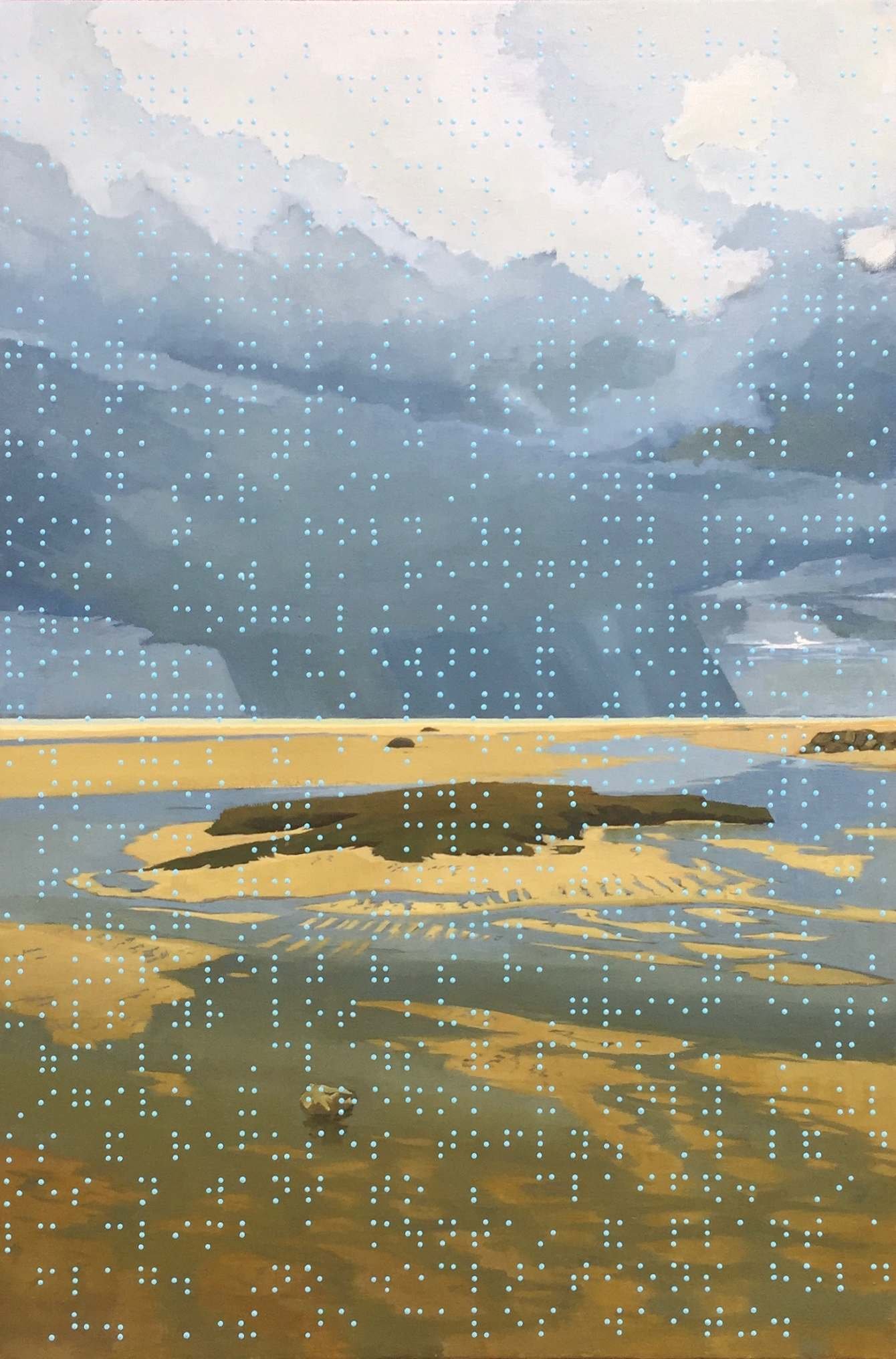Michael MacMahon
INHERITED VISTAS
On view June 12 - August 26, 2023
Reception: Thursday, July 13, 5:30-8:00PM
I Never Did Learn to Swim (2019)
New-England based painter Michael MacMahon presents a range of possible approaches and perspectives by which to analyze not only the unique places we inhabit, but also their context in relation to ourselves. Informed by his own immigration to the United States, MacMahon examines how each of us holds many landscapes in tension. These Landscapes reflect a living synthesis of people, place, need and curiosity that have brought peoples from different cultures and communities into contact across great distances. These landscapes are never inert, as people engage with them, re-work them, appropriate and contest them. As Landscapes operate on temporal scales they are tied to our identity or lack of identity, our roots or loss of roots. The Landscape is both spatial and temporal, as it encompasses activity, political action and evidence of changes past and present. It is a half imagined lived-in terrain, a distant and fantasized place held in memory.
Works on view
STATEMENT
INHERITED VISTAS
Each of us holds many landscapes in tension. These Landscapes reflect a living synthesis of people, place, need, curiosity, the seen and unseen forces that have brought peoples from different cultures and communities into contact across great distances. These landscapes are never inert, as people engage with them, re-work them, appropriate and contest them. As Landscapes operate on varied scales they are tied to our identity or lack of identity, our roots or loss of roots. The Landscape is both spatial and temporal, as it encompasses activity, political action and evidence of changes past and present. It is a half imagined lived-in terrain, a distant and fantasized place held in memory.
The lines, borders and boundaries of our perceived landscapes continue to be established, moved and contested. These borders and boundaries have created hierarchies and disparity that reverberate from generation to generation. Even contributing to the beginning of landscape painting, a genre in service to the idea that the land itself could be owned. This ongoing tension between nature (stressing the insignificance of humanity), habitat (humanities adjustment to nature), artifact (reflecting humanities impact on nature), wealth (in terms of property), ideology (revealing cultural values and social philosophy), history (as a record of the concrete and the chronological) and place (through the identity that locations have) is tied into our relationship with these landscapes.
Landscape painting and the advent of perspectival illusion has served to create a visual hierarchy over what is portrayed. A single viewpoint. Rather than living within an ecosystem we are trapped in a way of living where we strive to adjust the landscape to our needs. This fixed viewpoint of the landscape as space to be controlled and utilized for production and profit has become the norm the world over. This fixed gaze as in all Western art and culture where colonization and escapism remains an irrefutable undercurrent, is inherent in our experience of the landscape. In these paintings I am contesting the casual gaze in the landscape by denying the easy access of depth, space and comfort. The window into a fixed space is barricaded by numerous patterns and configurations which repeat and disrupt via systems of shape and color. These spatial and optical experiences playing with visual perception and proximity constantly change the compositions within the viewer's line of sight.


















